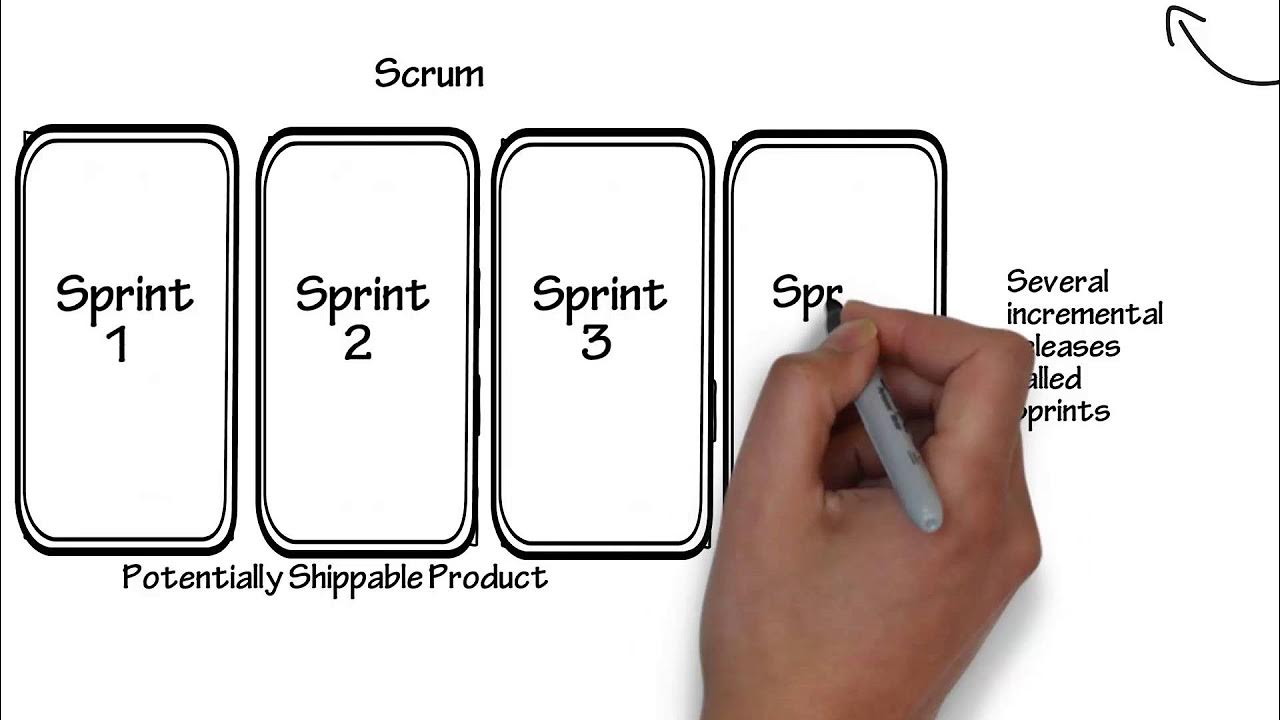What is the Product Backlog in Scrum? | Agility and agile topics explained by Sohrab Salimi
Summary
TLDRThis video offers a concise overview of the product backlog in Scrum, one of three key artifacts alongside the sprint backlog and product increment. It emphasizes the importance of the product goal in shaping the backlog, which initially consists of larger items like epics. The script explains the necessity of product backlog refinement to make it detailed, appropriately sized, emergent, estimated, and prioritized (DEEP). This process involves collaboration between the product owner, developers, and stakeholders. The video promises further insights into the sprint backlog's role in enhancing sprint focus in upcoming episodes.
Takeaways
- 📝 The product backlog is one of three artifacts in Scrum, alongside the sprint backlog and the product increment.
- 🎯 The product backlog is linked to a commitment, specifically the product goal, which guides its creation.
- 👥 Understanding the customers and their needs, as well as the product's key characteristics, is essential before creating the initial product backlog.
- 📚 The initial product backlog often contains larger items, sometimes called epics, which need further refinement for practical development.
- 🔍 Product backlog refinement is the process of making the backlog ready for the next sprint planning.
- 🔄 The acronym DEEP stands for Detailed, Appropriately sized, Emergent, Estimated, and Prioritized, which are the characteristics that make a product backlog ready.
- 👥 The product owner typically refines the product backlog with the support of developers and key stakeholders.
- 📉 The product backlog refinement involves breaking down larger items into smaller, more manageable tasks.
- 📆 During sprint planning, items from the product backlog are transferred into the sprint backlog to focus development efforts within a sprint.
- 🔍 The sprint backlog will be further explained in subsequent videos, highlighting its role in creating focus within a sprint.
- 👋 The video concludes with an invitation to learn more about the sprint backlog in upcoming videos.
Q & A
What are the three artifacts within Scrum?
-The three artifacts within Scrum are the product backlog, the sprint backlog, and the product increment.
What is the primary purpose of the product backlog in Scrum?
-The primary purpose of the product backlog is to list all the work items or features that need to be considered for the product development, aligned with the product goal.
What is the product goal and how does it relate to the product backlog?
-The product goal is a commitment that helps guide the creation of the product backlog, ensuring that the backlog items align with the overall aim of the product.
What are the initial contents of the product backlog typically made up of?
-The initial product backlog typically consists of larger items, sometimes referred to as epics, which are not detailed enough for development to start.
Why is it necessary to refine the initial product backlog?
-It is necessary to refine the initial product backlog to make it ready for the next sprint planning, ensuring that the items are detailed, estimated, and prioritized.
What does the acronym 'DEEP' stand for in the context of product backlog refinement?
-In the context of product backlog refinement, 'DEEP' stands for Detailed, Appropriately sized, Emergent, and Prioritized.
Who is typically involved in the product backlog refinement process?
-The product owner, developers, and often key stakeholders are typically involved in the product backlog refinement process.
What is the objective of product backlog refinement?
-The objective of product backlog refinement is to make the product backlog 'DEEP', ensuring that it is ready for the upcoming sprint planning.
What happens to the items in the product backlog during sprint planning?
-During sprint planning, items from the product backlog are moved into the sprint backlog to focus on the work to be done in the upcoming sprint.
How does the sprint backlog differ from the product backlog?
-The sprint backlog differs from the product backlog in that it contains the specific tasks and work items that the team will focus on during the current sprint, whereas the product backlog is a more comprehensive list of all potential work items.
What is the role of the product owner in the context of the product backlog?
-The product owner is responsible for creating and maintaining the product backlog, ensuring it is aligned with the product goal and is refined to be ready for sprint planning.
Outlines

This section is available to paid users only. Please upgrade to access this part.
Upgrade NowMindmap

This section is available to paid users only. Please upgrade to access this part.
Upgrade NowKeywords

This section is available to paid users only. Please upgrade to access this part.
Upgrade NowHighlights

This section is available to paid users only. Please upgrade to access this part.
Upgrade NowTranscripts

This section is available to paid users only. Please upgrade to access this part.
Upgrade Now5.0 / 5 (0 votes)





